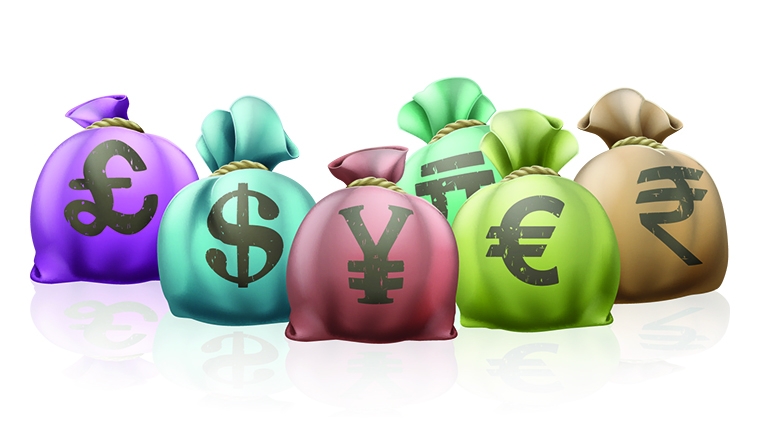
US equities and gold have powered up to fresh record highs in the wake of the Fed restarting the easing cycle last week. Fed speakers have been doing the rounds, with the turn of the more hawkish FOMC members overnight and, coincidentally or not, US Treasuries have traded with a cautious tone, with rates nudging higher. European currencies have outperformed, and the NZD is a touch stronger.
The S&P500 is currently up 0.4% to a fresh record high. Fed easing cycles, outside of recessionary environments, are bullish for equities. Adding to the fuel, Nvidia and OpenAI have teamed up in a “giant” project including plans for a massive data centre buildout (that will consume at least 10 gigawatts of power) and a $100 billion investment by the chip maker into the startup.
European markets have lagged, with the Euro Stoxx 600 index down 0.1%. Japan’s Nikkei index rose 1.0%, rebounding further after Friday’s intraday spit when the BoJ revealed a plan to sell down its massive holding of Japanese equities. At the proposed run-rate, it would take over a hundred years for the sell down to end, mollifying any concerns that the plan would put any downside pressure on the equity market.
Fed speakers have been doing the rounds, with Bostic, Musalem and Hammack suggesting that they were three of the seven policymakers that did not pencil in any more cuts for this year. Treasuries are trading cautiously, with rates up 1-2bps since last week’s close, with the 10-year rate currently at 4.14%.
Atlanta Fed President Bostic said inflation concerns would make him hesitant for now to declare support for cutting rates again in October, even though economic risks have shifted in recent months toward greater worries about employment. Bostic said that he pencilled in only one rate cut for all of 2025 at the FOMC meeting last week, meaning he doesn’t currently anticipate the need for another reduction at either of the two meetings remaining this year.
St Louis Fed President Musalem said he supported last week’s rate cut “as a precautionary move intended to support the labour market at full employment and against further weakening…however, I believe there is limited room for easing further without policy becoming overly accommodative”. He would support further rate cuts only if further signs of labour market weakness emerge, the risk of above-target inflation persistence has not increased, and longer-term inflation expectations remain anchored.
Cleveland Fed President Hammack, widely seen as the member whose “dot” represented the person who wouldn’t have voted for last week’s rate cut had she been a voter, said “I think that we should be very cautious in removing monetary policy restriction…I feel like the labour side is still in a pretty good shape, and I’m really worried about what’s going on with inflation”.
At the end of last week, newly appointed Governor Miran – still a White House employee – revealed himself to be the member who had wanted 150bps of rate cuts for the three remaining meetings of 2025. Overnight, he gave his first speech as a Fed Governor and said he believed the appropriate fed funds rate is in the mid 2% area, almost 2 percentage points lower than current policy.
Currency movements have been modest but European currencies have outperformed since last week’s close. CAD has underperformed, being the only key major to fall against the USD, although gains for the NZD and AUD have been tepid. The NZD is up slightly to 0.5870, while the only gains on crosses have been a tick up in NZD/AUD to just under 0.89 and a 0.5% gain in NZD/CAD to over 0.81. NZD/EUR has been probing fresh 15-year lows and is currently 0.4975. NZD/GBP is down a touch at 0.4340 while NZD/JPY is flat at 86.7.
Gold prices continue to power on up, fuelled by rising flows into gold ETFs. Spot gold is up over 1½%, closing in on USD3750 per troy ounce. Gold has gained over 10% over the past four weeks, a period over which “digital gold”, or bitcoin has tracked sideways and is down about 2½% for the day to USD112.5k. Gold has a been a key beneficiary of the dollar debasement narrative, where investors are looking to protect themselves from higher long-term inflation and a weaker USD.
Yesterday, the domestic rates market was quiet. The 2-year swap rate might have finally bottomed out for now in the wake of last week’s poor Q2 GDP figure, and it rose 1bp to 2.68%. The curve is slightly steeper, with the 10-year rate up 2bps to 3.74%. NZGB yields rose 2-4bps across the curve.
On the economic calendar, early-September PMI data for Europe and the US are released tonight.
Daily exchange rates
Select chart tabs
Jason Wong is the Senior Markets Strategist at BNZ Markets.

We welcome your comments below. If you are not already registered, please register to comment.
Remember we welcome robust, respectful and insightful debate. We don't welcome abusive or defamatory comments and will de-register those repeatedly making such comments. Our current comment policy is here.